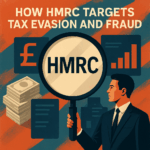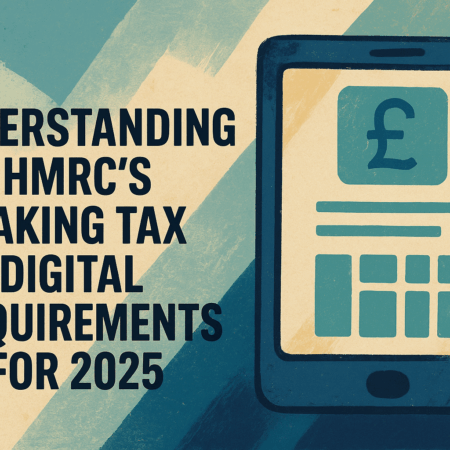Overview of Making Tax Digital (MTD)
Understanding HMRC’s Making Tax Digital Requirements for 2025 is more important than ever as the UK continues shifting toward a fully modernised tax system. MTD aims to make tax administration more accurate, efficient, and user-friendly for both individuals and businesses.
Why HMRC Introduced MTD
HMRC designed MTD to reduce tax-related mistakes and encourage real-time reporting. Traditional paper-based or spreadsheet systems often lead to errors, missing receipts, and inaccurate figures. By requiring digital record-keeping, HMRC hopes to create smoother tax processes.
Digital Transformation in UK Tax System
The UK tax system has long been criticised as outdated. With MTD, HMRC is aligning with digital standards seen in global tax administrations. This shift improves transparency, reduces tax gaps, and encourages better financial literacy across the country.
What’s New in HMRC’s Making Tax Digital Requirements for 2025
The year 2025 brings major updates to compliance that everyone should understand. Many businesses have already transitioned, but 2025 extends obligations.
Key Regulations Effective April 2025
Starting April 2025, more taxpayers—including self-employed workers and landlords earning above the threshold—will be required to submit quarterly digital updates using HMRC-approved software.
Compliance Expectations for Individuals and Businesses
Both individuals and businesses must maintain digital records, meet quarterly deadlines, and file a final declaration. Compliance means using functional compatible software and ensuring all financial records are updated in real time.
Who Must Comply with MTD in 2025
The updated rules expand the number of people and entities required to follow digital tax processes.
Self-Employed Individuals
Anyone earning income from self-employment above HMRC’s threshold must use MTD-compatible software starting in 2025.
Landlords
Individuals receiving property income will need to maintain digital records and submit quarterly updates.
VAT-Registered Businesses
Many VAT-registered businesses have already adopted MTD, but stricter requirements apply in 2025.
Partnerships and LLPs
Certain general partnerships will also be phased into MTD from 2025 onward, bringing even more entities into the digital tax system.
Digital Record-Keeping Obligations
What Qualifies as “Digital Records”
Digital records include invoices, receipts, transaction histories, and income logs stored within approved software. HMRC requires that data be stored digitally from the moment it’s first created, making manual transcription a non-compliant method.
Software and Tool Requirements
Software must be fully compatible with HMRC’s MTD API. Popular options include cloud-based accounting tools that automate entries and calculations. You can find a list of software options on official sites like the Government’s digital services directory.
Quarterly Updates Under MTD
Submission Schedule
Taxpayers must file updates every three months. These updates provide HMRC with summarised income and expenses.
Data Required for Every Digital Update
Entries include business income, allowable expenses, and other financial figures needed to estimate tax liabilities.
Final Declaration Rules for 2025
End-of-Period Statement (EOPS) Process
After the fourth quarterly update, taxpayers must review and correct any figures through the EOPS.
How Final Tax Calculations Are Completed
Once EOPS is submitted, the final declaration confirms total taxable income for the year and calculates the final amount owed.
Approved Software for MTD Compliance
Cloud-Based vs. Desktop Tools
Cloud-based tools offer automation, remote access, and real-time syncing, while desktop tools may offer more control but fewer digital advantages.
Key Features to Look For
Look for automated bookkeeping, bank feed integration, receipt scanning, and HMRC API compatibility.
Step-by-Step Guide to Meeting MTD Requirements in 2025
Preparing Your Business
Assess your existing tax processes and identify gaps in digital record-keeping.
Migrating from Manual to Digital
Move spreadsheets and paper documents to cloud-based systems for compliance.
Verifying Your Data
Check that your entries are accurate, consistent, and stored securely.
Common Challenges Businesses May Face
Technology Adoption Issues
Businesses not used to digital tools may struggle initially.
Record-Keeping Accuracy
Errors still occur if data is entered incorrectly, even with software.
Missed Deadlines
Quarterly submissions require routine discipline and reminders.
Penalties for Non-Compliance
Points-Based Penalty System
Each missed submission adds penalty points, eventually leading to fines.
Late Submission Penalties
Penalties depend on severity and frequency of missed updates.
Benefits of Following MTD Requirements
Reduced Errors
Automated entries reduce inaccuracies.
Real-Time Financial Insights
Users get better control over their financial data.
Faster Tax Processing
Digital submissions speed up HMRC’s response times.
Cost Implications of MTD in 2025
Software Costs
Most tools charge monthly subscriptions ranging from small business packages to advanced enterprise features.
Training & Setup Expenses
Businesses may need to train staff or hire accountants to help with early setup.
Practical Tips for Smooth MTD Adoption
Automation Strategies
Use automated bank feeds and receipt-capturing apps.
Choosing the Right Accountant
A digital-ready accountant ensures compliance and efficiency.
FAQs About Understanding HMRC’s Making Tax Digital Requirements for 2025
- Who exactly must comply by 2025?
Self-employed individuals, landlords, VAT companies, and some partnerships. - Can spreadsheets still be used?
Only if they integrate with bridging software. - Are quarterly updates the same as tax returns?
No, they are summary updates, not full returns. - Will penalties be strict?
Yes—HMRC is applying a points-based penalty system. - Do landlords need to use software?
Yes, property income must be digitally recorded. - Where can I learn more?
See HMRC’s official page: (external resource) https: // www.gov.uk.
Conclusion: Preparing for a Fully Digital Tax Future
Understanding HMRC’s Making Tax Digital Requirements for 2025 is crucial for remaining compliant and avoiding penalties. With digital record-keeping, quarterly updates, and automated software, taxpayers can stay organised and maintain accuracy year-round. Now’s the perfect time to prepare your business for a smooth transition.








